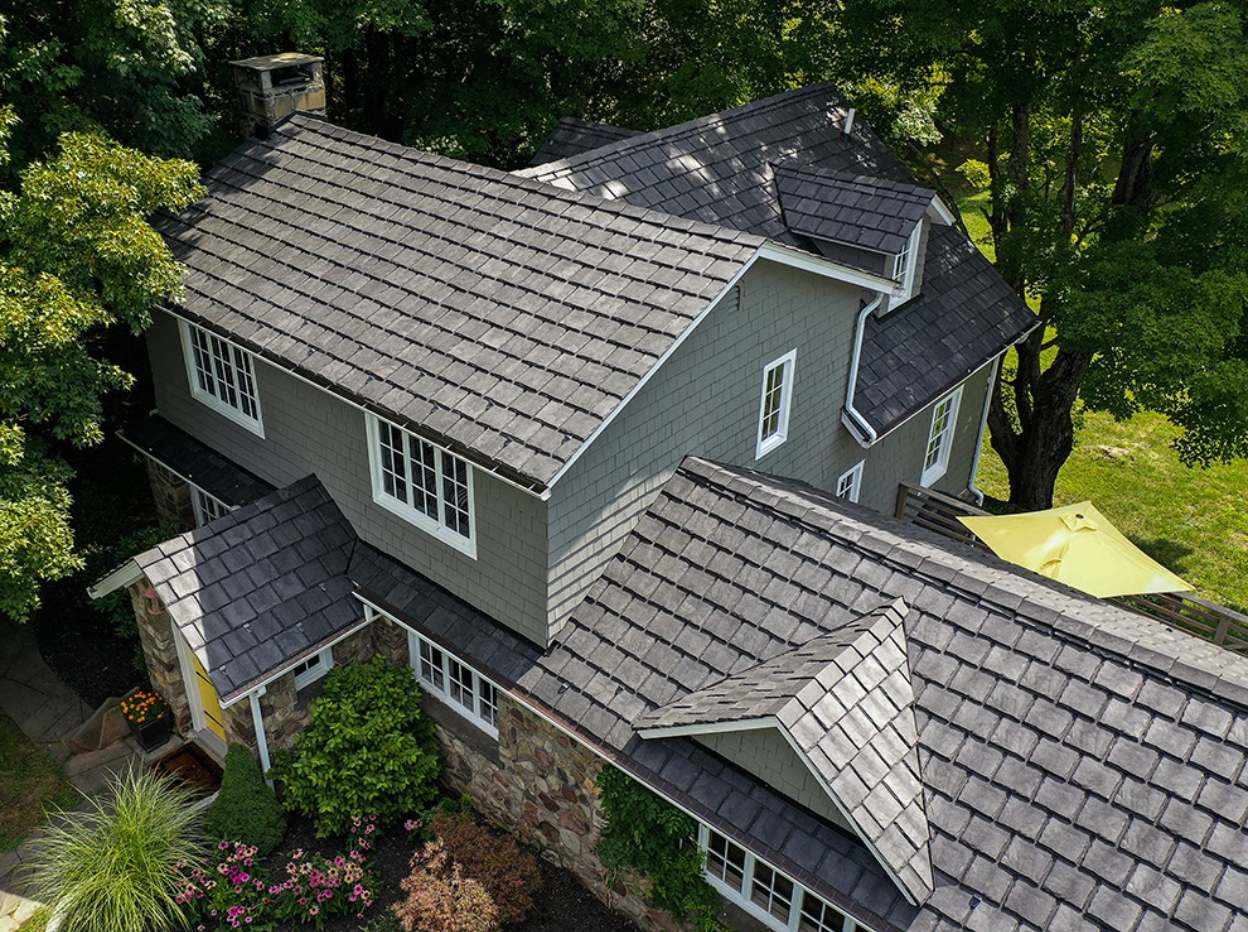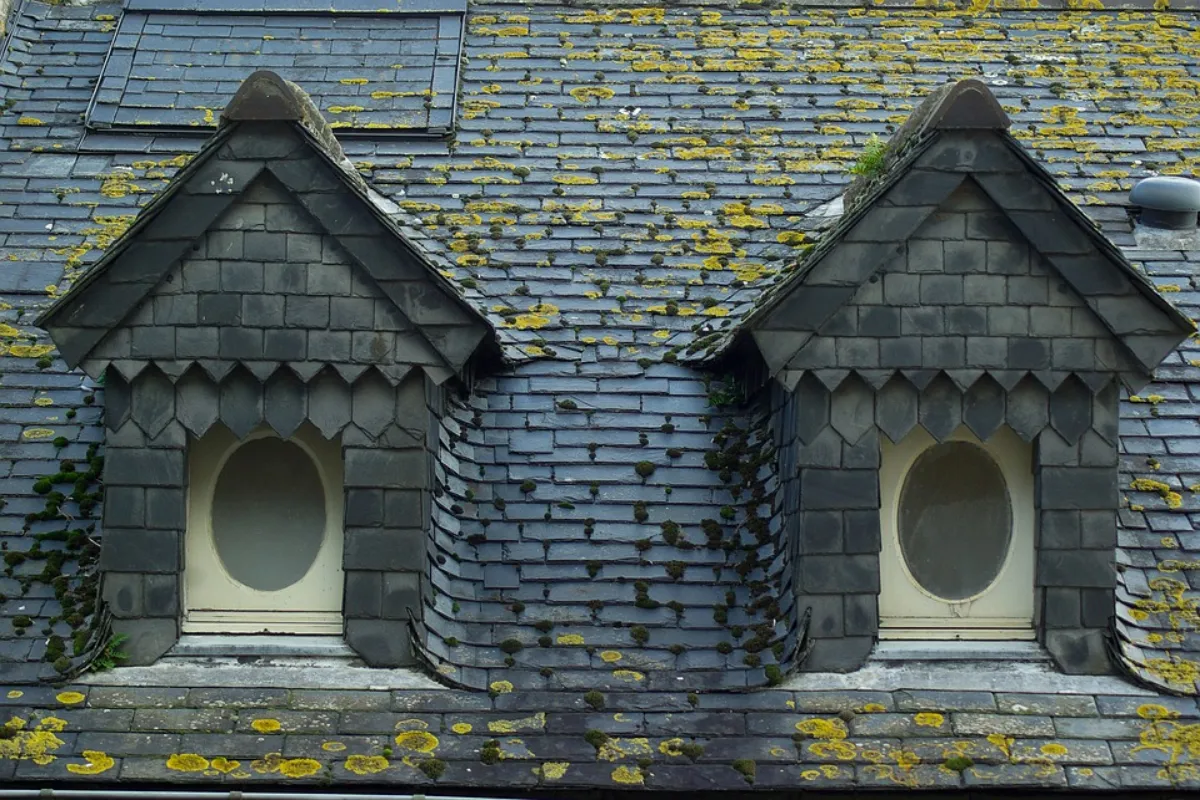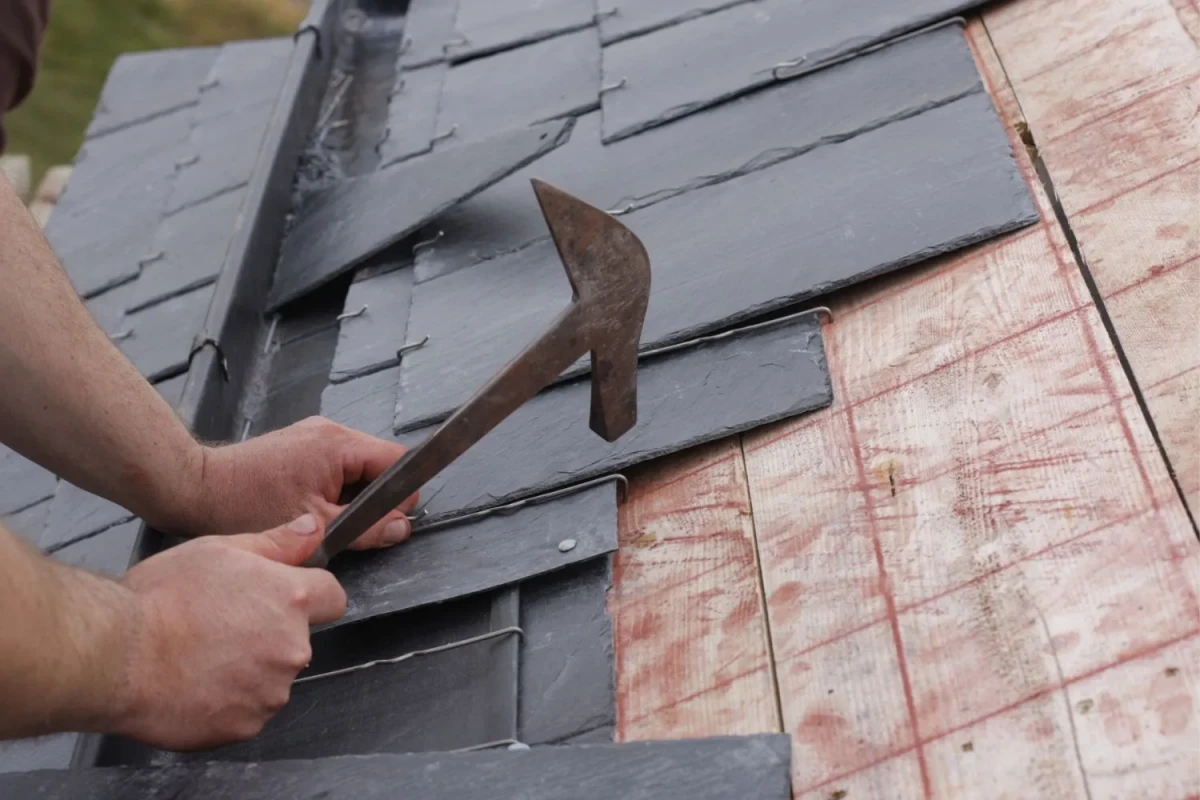Slate Roofing: Natural vs. Fiber Cement Slate
People recognize slate roofing for its enduring beauty and strength. When you think about slate as a roofing material, you typically encounter two primary choices: natural slate and fiber cement slate. This article aims to explore the differences between these two choices, helping you make an informed decision for your roofing needs.
Natural Slate:
Natural slate is quarried from sedimentary rock formations, such as shale or clay, that have been compressed and heated over millions of years. Here are some key attributes of natural slate:
1. Aesthetic Appeal: Natural slate provides a unique, rustic appearance with variations in color, texture, and patterns. Each slate tile is distinct, creating an organic, earthy look that many homeowners find captivating.
2. Durability: Natural slate is renowned for its longevity. When correctly installed and maintained, it can last for over a century. It is highly resistant to damage from weather, UV rays, and fire.
3. Eco-Friendly: As a naturally occurring material, natural slate is environmentally friendly and sustainable. It requires minimal processing and leaves a small carbon footprint compared to other alternatives.
4. Natural Insulation: Slate inherently possesses thermal insulating properties. It helps keep your home cooler in the summer and warmer in the winter, potentially leading to energy savings.
Fiber Cement Slate:
Fiber cement slate, often referred to as composite or man-made slate, is produced by mixing cement, fibers, and other additives. Here are some characteristics of fiber cement slate:
1. Uniformity: Fiber cement slate tiles are consistent in color, size, and shape. This uniformity provides a neat and tidy appearance to the roof.
2. Lighter Weight: Fiber cement slate is significantly lighter than natural slate, making it easier to handle during installation. This can reduce labor costs and eliminate the need for additional roof reinforcement.
3. Price: Fiber cement slate is usually more budget-friendly than natural slate. It offers a slate-like appearance without the premium cost of natural materials.
4. Low Maintenance: Composite slate typically requires less maintenance and can be cleaned with basic household cleaning products. It is also less susceptible to chipping or cracking during handling.
5. Versatility: Thanks to its lightweight characteristics, fiber cement slate is occasionally applied in retrofit applications, where natural slate might not prove to be the most feasible choice.
The choice between natural slate and fiber cement slate depends on your specific needs and preferences. If you value the unmatched charm of natural materials, their longevity, and environmental sustainability, natural slate is the superior choice. However, if you are working within a budget, desire low-maintenance roofing, and prefer uniformity, then fiber cement slate could be the better option.
Ultimately, your decision should be based on a balance between aesthetics, cost, and performance. Consulting with a professional roofer is essential to ensure the roofing solution aligns with your vision for your home. Whether you opt for the enduring beauty of natural slate or the practicality of fiber cement slate, both choices can provide a stunning and reliable roof for your property.
2023-10-23





